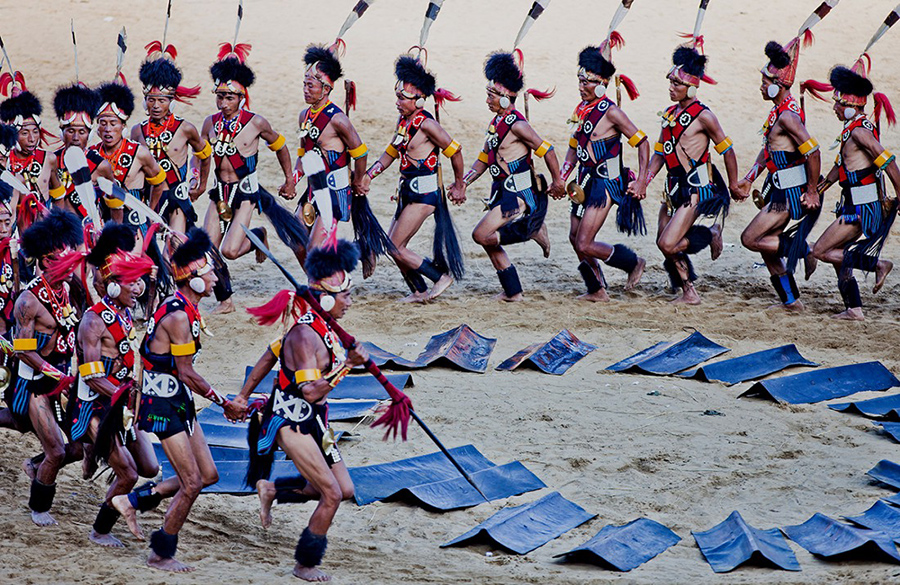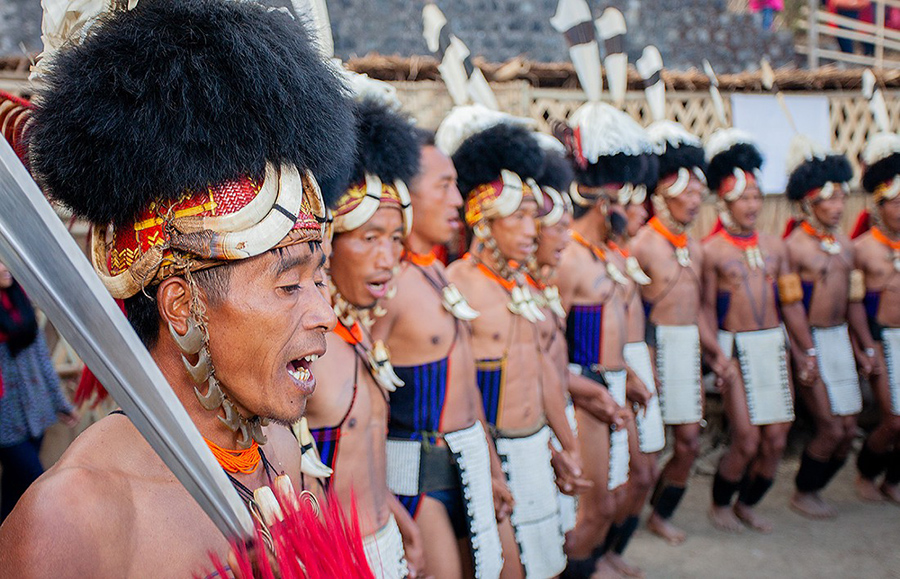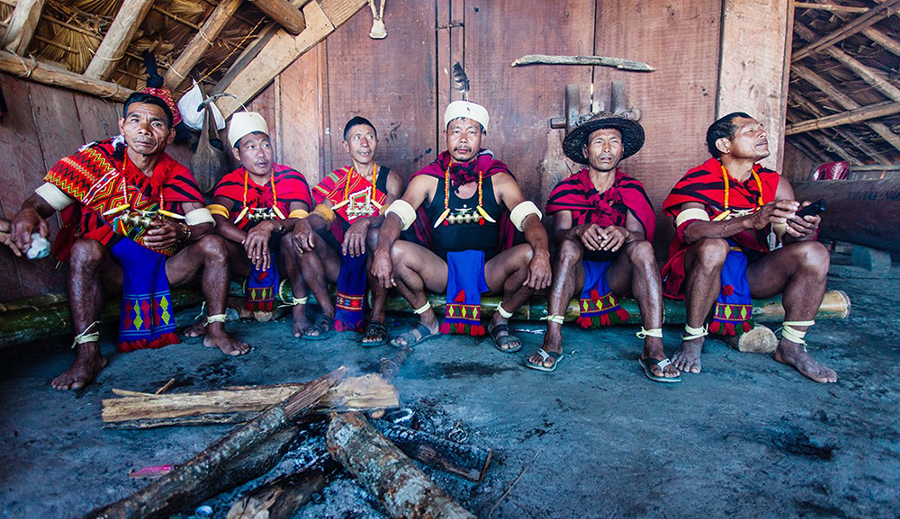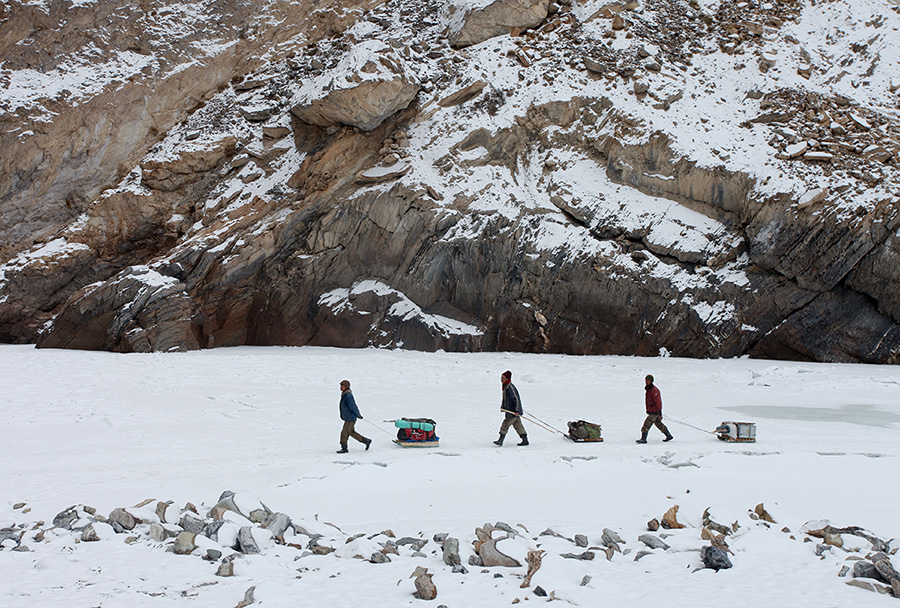Originally published on medium.com
Unusual political boundaries have isolated North-East India from rest of the world (and rest of India) for many years. This is perhaps one of the reasons that has allowed this region to retain and celebrate a good part of its indigenous culture without significant influence from outside.

Performances at the Hornbill Festival, Kohima.
The Hornbill Festival in the hill-state of Nagaland is perhaps the most eclectic and elaborate of all the cultural events in the region. It offers a glimpse of North-East India’s rich culture, even though it showcases life and rituals from just one of the seven states in the region. This is a celebration of customs, cultures and everyday life of the seventeen communities that inhabit the hills of Nagaland. For ten days every December, the slopes of Kisama Village reverberate with gentle murmur of folks songs alternating with cries of hunters displaying their skills in the arena.
Every December, we conduct a week long mentored photography tour that offers excellent opportunities to learn the nuances of photographing people and cultures. The tour also helps you experience the rich culture of North-East India from up-close. We travel with a cultural guide having an in-depth knowledge of North-East India, its history and culture. It’s an awesome journey that offers unparalleled photography opportunities and unique people encounters. To be a part of this tour, visit “Photography in North-East India and Hornbill Festival” and find out more details.

Naga people at a performance during Hornbill Festival.
What makes Hornbill Festival an endearing experience is in the way the festival is not limited to an on-stage ensemble that isolates itself and doesn’t connect with its audience beyond the performance. During the days of the festival, each of the seventeen communities setup their own corner at the festival venue that permits personal interactions between visitors and the performing artists.

Performers in their morung at the festival venue.
Morungs, roughly translated as dormitories, are places where a community’s performing members come to rest between performances and occasionally conduct small ritual activities. In Naga tradition, a morung is a community building in a village that serves as a dormitory and a place for schooling young men. A morung also doubles up as a place of gathering for the community, from where villagers conduct meetings or announce events in the village.
Image below, of porters drag sledges on a frozen Zanskar River, facilitating us on ‘Chadar Trek’.

It was about seven years ago that I walked on the now well-known Chadar Trek–a fascinating walk on the ice-sheets of Zanskar in winter months. We walked for nearly two weeks, crossing over from Indus Valley to the habitations in Zanskar region. We walked over thick and thin ice and sometimes had to face climbing challenges where the ice-surface was completely broken.
In the year that we were there, we noticed no more than a handful of trekkers along the path and occasional Zanskar-locals trying to get to Leh on the ice-road. It was a near-empty path on the ice.
The recent years, I have been told, have seen an explosion of people trying to get on Chadar. It has come with its share of environmental consequences, such as porters cutting away the last of the trees for firewood and too much human activity degrading the ice surface. Some travellers have complained about accumulating trash and human waste. The narrow river gorge has very little plain spaces in its banks and trekkers have even had difficulties finding ground to pitch tents in the crowded camping locations.
Looking back at all this and my own journey across the ice-river, it is obvious that I have been one of the contributors to the transformation of a region of astounding beauty into just-another-place that contributed to human need for entertainment. Being one of the early visitors to the area and having written about it and talked about it many forums, I have perhaps had my contributions to popularizing the region as well (you can see several stories by searching within this blog).
This brings me to a larger question, where I only have questions at the moment without any answers. How do we make our insatiable desire to be everywhere a sustainable one that leaves no damaging footprints? The work is on; I am, as lot of travellers are, increasingly looking forward to making our journeys environment conscious, and hoping to taking more concrete steps in the direction with progress in time.
At an altitude of 14,000 to 17,000 feet in the western parts of Ladakh lives a community of semi-nomadic herders that have lived a self-sustained life for millenniums. Despite the new found connectivity with the modern world, they have continued their wandering lifestyle that is essential for keeping their livestock well fed.
My first brush with Changpa nomads happened a decade ago, when I spotted their rebo–traditional yak-wool tents–at a distance on the long road from Manali to Leh. They had pitched tents on the famous Morey plains faraway from the road that made them look like black spots in the landscape. But smoke rising from the cow-dung stoves revealed what they are. Until that time, I had heard time and again that there are no settlements in the highlands on the difficult road from Manali to Leh. I learned few years later that they were not here just for the warm summer months, but continue to live at high altitudes even in winters, braving temperatures of -25C and lower.
Over the years, I had many encounters with Changpa people during my wanderings in the high-altitude Changthang region adjoining Tibet. A few weeks after I first saw their tents, I had an opportunity to wander in one of their settlements in a place of spell-binding beauty. The land they had chosen was carpeted with lush green grass on a kind of soft ground where you relish walking bare foot. Small streams–springs that emerged from gaps in the ground–crisscrossed the fresh landscape. When you looked up, mountains in every direction were adorned with thick cover of snow on their peaks. The skies appeared eternally blue. Yaks, cows, a few sheep that had not made their way up the mountains and a handful of donkeys grazed happily on the tender grass.



